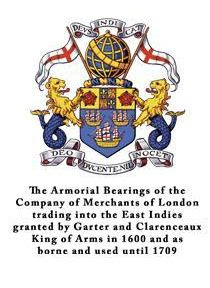
The story of Yale, as told by Edwin Oviatt, in The beginnings of Yale (1701-1726), published in 1916, began in England where John Davenport, John Cotton, Thomas Mather and Theophilus Eaton lived in fear of their lives if they continued to practice the religious faith they shared. The four men would meet up once again in "the new world" in 1637 at Massachusetts Bay Colony, to which Davenport had fled into the arms of his old friends. There Harvard College would be founded, which remained the only upper level educational institution until the establishment of Yale in 1701.
It is the purpose of this post to determine who were the men most responsible in those early days for creating the university now known as Yale. Eventually, we will also connect those original founders to the secret society known as Skull and Bones.
Rev. John Davenport soon became dissatisfied in the Puritan colony in Massachusetts and desired to dominate his own group, which he set up the following year at New Haven on land acquired from some friendly Indians.
 |
| Rev. Davenport |
The Eaton/Yale Family: Rev. Theophilus Eaton, before leaving England, had married the widow of David Yale and brought the children of that marriage--David, Thomas, and Anne Yale--with him to New Haven. For a time in New Haven Davenport had recruited the services of an eminent scholar and teacher, Ezekiel Cheever, whose behavior was called out for impiety, and he departed the theocratic colony in 1647, ending up at Harvard, where he taught Cotton Mather. It would take John Davenport two long decades of independence from all outside help to realize that his vision would not be realized in his lifetime without some measure of outside assistance.
 |
| Hopkins |
A year after the promise was made, Hopkins died unexpectedly, and when his will was read, Davenport discovered Hopkins had divided his educational bequest, for a grammar school and college, between the New Haven sect and that of Hooker's more liberal group. Davenport turned the trust documents over to his colony in 1660, which established Hopkins Grammar School, although the funds for its maintenance would be tied up for several more years.
Hopkins' death had unfortunately occurred during the same year Cromwell was deposed and King Charles returned to the throne in England. Davenport's behavior was contrary to the King's interest, while Governor Winthrop of Connecticut, representing the other three confederated towns within the colony, had sought protection of their charters from the new king. The new charter signed by the king included the New Haven territory, without recognizing it claim as an independently governed member of the confederation of Connecticut.
 |
| Hooker |
Pierpont married for the last time in 1698, the granddaughter of Thomas Hooker, one of the original American settlers at at Plymouth, Massachusetts in 1620, who had removed from there to establish Connecticut's first democratic colony in Hartford. It was 1701 before the descendants of those who had received the divided trust from Edward Hopkins were amenable to get together once again in Old Saybrook to discuss founding a "collegiate school" they had desired for so long. The details are set out as they then occurred, or were conjectured to have occurred, by Oviatt in his book mentioned above, which took him almost 200 pages to reach his starting point of 1701.
 |
| Rev. James Pierpont |
But by the time of Pierpont's death in 1714, the financial plight of the young college was suffering to such an extent he had written off to England in 1711 for help from a Colonial agent named Jeremiah Dummer. It was Dummer from whom Elihu Hale--whose ancestry connects him to Connecticut through Eaton, as described above--learned of the need for a life rope. Elihu was the son of David Yale, whose stepfather Theophilus Eaton, had been a close friend of John Davenport. After leaving the New Haven colony, David Yale had married and lived for a time in Boston, where Elihu was born, then returned to England and became a merchant in Wrexham in northeast England. Elihu eventually joined the East India Company in 1671, remaining in Madras for 27 years. While there he married Catherine Hynmer, a wealthy widow with four children, who gave him three daughters and a son, David Yale, who died and was buried in Madras in 1688.
 |
| Elihu Yale |


From Grisly ‘Skull And Bones’ Relic Is Set To Be Auctioned Off By Christie’s
From Christie's Auction fetched 2,125 Skull and Bones Yearbook, 322, VI., c. 1869 Photographer unknown
From Blog Geronimo and skull and bones society
















No comments:
Post a Comment